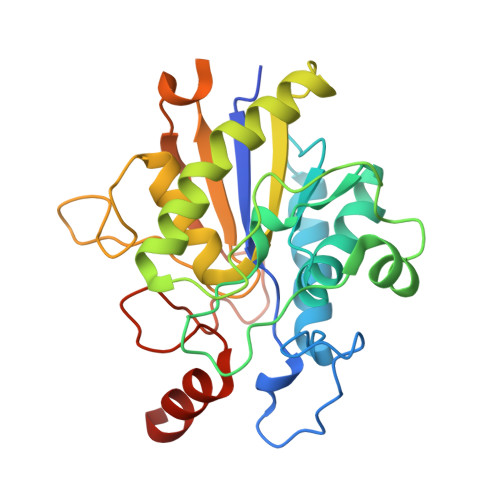Structural and Functional Characterization of a Phosphatase Domain within Yeast General Transcription Factor Tfiiic.
Taylor, N.M.I., Glatt, S., Hennrich, M.L., Von Scheven, G., Grotsch, H., Fernandez-Tornero, C., Rybin, V., Gavin, A., Kolb, P., Muller, C.W.(2013) J Biological Chem 288: 15110
- PubMed: 23569204
- DOI: https://doi.org/10.1074/jbc.M112.427856
- Primary Citation of Related Structures:
2YN0, 2YN2 - PubMed Abstract:
Saccharomyces cerevisiae τ55, a subunit of the RNA polymerase III-specific general transcription factor TFIIIC, comprises an N-terminal histidine phosphatase domain (τ55-HPD) whose catalytic activity and cellular function is poorly understood. We solved the crystal structures of τ55-HPD and its closely related paralogue Huf and used in silico docking methods to identify phosphoserine- and phosphotyrosine-containing peptides as possible substrates that were subsequently validated using in vitro phosphatase assays. A comparative phosphoproteomic study identified additional phosphopeptides as possible targets that show the involvement of these two phosphatases in the regulation of a variety of cellular functions. Our results identify τ55-HPD and Huf as bona fide protein phosphatases, characterize their substrate specificities, and provide a small set of regulated phosphosite targets in vivo.
Organizational Affiliation:
Structural and Computational Biology Unit, European Molecular Biology Laboratory, 69117 Heidelberg, Germany.

















